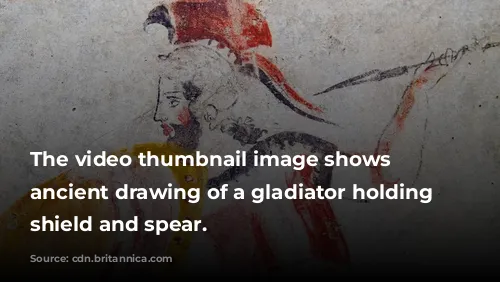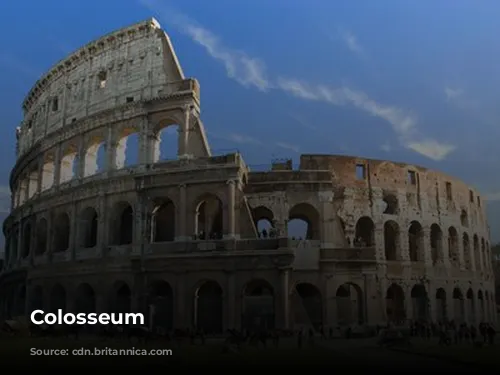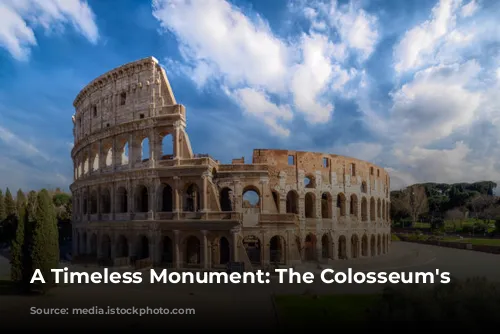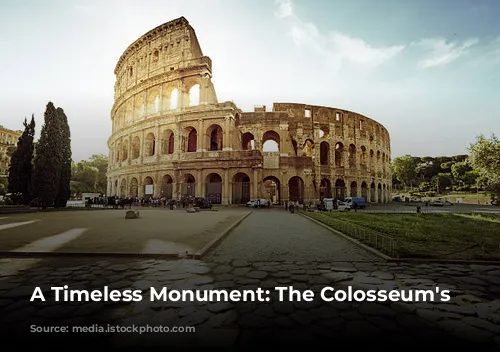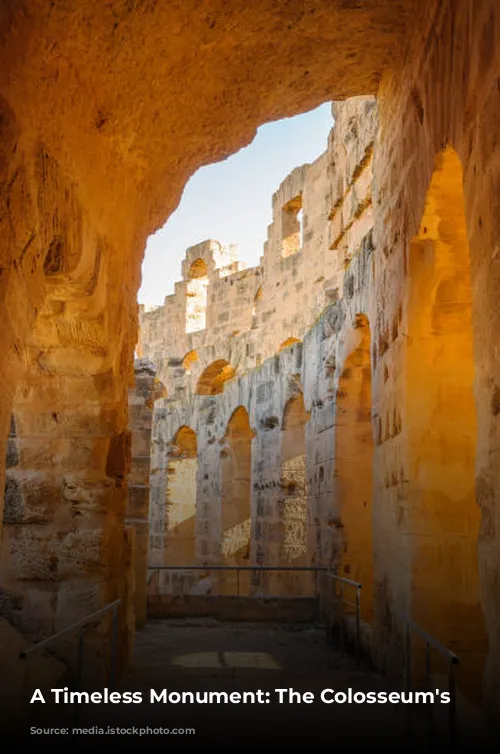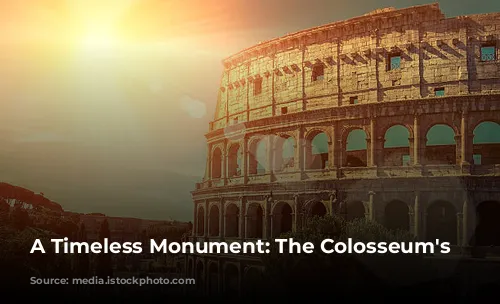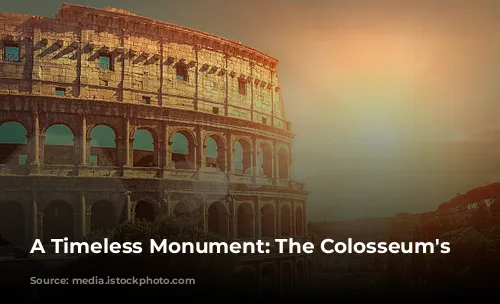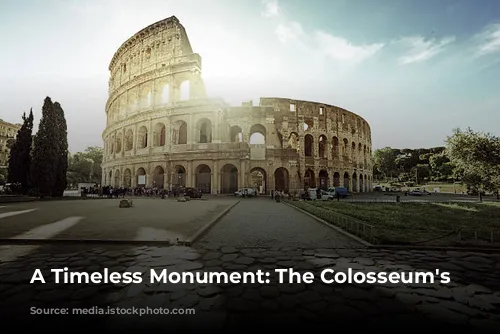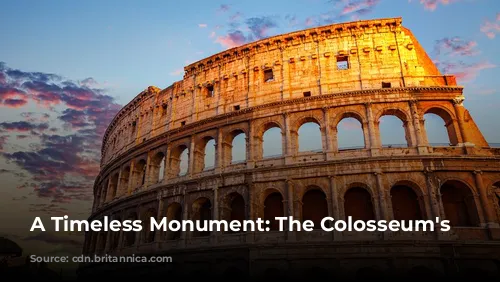The Colosseum stands as a testament to the architectural genius of ancient Rome, one of the few structures from that era still standing today. Its grandeur and historical significance draw millions of visitors every year, making it a crucial source of revenue for Italy. The Colosseum, along with the Roman Forum and Palatine Hill, attracted over $63.3 million (€53.8 million) in tourist revenue in 2018, solidifying its place as Italy’s top tourist attraction.
From Glory to Ruin and Restoration
The Colosseum’s story is one of remarkable construction, neglect, and ultimate preservation. After the fall of the Western Roman Empire, the magnificent arena fell into disrepair. The 12th century saw the Frangipane and Annibaldi families repurposing the Colosseum as their fortress, a far cry from its original purpose. The 15th century brought further neglect, as Pope Alexander VI allowed the Colosseum to be stripped for its building materials, a sad testament to the changing times. This cycle of neglect lasted over a thousand years until the 1990s when state-funded restoration efforts finally breathed life back into this architectural marvel.
A Symbol of Imperial Power and Entertainment
The Colosseum’s construction was a grand endeavor, reflecting the imperial ambitions of Vespasian, the Roman Emperor. In the wake of a tumultuous year in Roman history, known as the “Year of the Four Emperors,” Vespasian sought to revitalize Rome. Like other amphitheaters, the Colosseum was meant to be a center for entertainment, hosting a diverse range of events, including gladiator fights, animal hunts, and even mock naval battles. This structure was not simply a place of leisure but a powerful symbol of Rome’s strength and grandeur.
From Foundation to Completion
The construction of the Colosseum began under Vespasian between 70 and 72 CE, and it was dedicated in 80 CE by his son and successor, Titus. The Colosseum’s fourth story was added by Emperor Domitian in 82 CE. This impressive structure was funded by the spoils of war, specifically the plunder from Titus’s conquest of Jerusalem in 70 CE, and was built by enslaved Jews from Judea. The Colosseum stands as a reminder of the complex social dynamics of the Roman Empire, its triumphs, and its brutality.
A Marvel of Engineering and Architecture
The Colosseum, also known as the Flavian Amphitheatre, is a breathtaking example of Roman engineering and architecture. It is an elliptical structure made of stone, concrete, and tuff, reaching a height of four stories. At 620 by 513 feet (189 by 156 meters), the Colosseum could accommodate a staggering 50,000 spectators, making it a true marvel of its time. This colossal structure was primarily used for gladiatorial combat, becoming synonymous with the thrill and spectacle of ancient Rome.
A Symbol of Power and Entertainment
The Colosseum’s location itself was a symbolic gesture. It was built just east of the Palatine Hill, on the grounds of Nero’s Golden House. Vespasian, who rose to power through humbler beginnings, chose to replace Nero’s lavish palace with a public amphitheater, demonstrating his commitment to the Roman people and their entertainment. This act was a bold statement, signifying a shift from the excesses of the past to a new era of public engagement.
A Monument of Stone and Concrete
The Colosseum’s construction was unlike any previous amphitheater, showcasing the innovative engineering skills of the Romans. Rather than being built into a hillside for support, the Colosseum stands as a freestanding structure of stone and concrete. It utilizes a complex system of barrel vaults and groin vaults, highlighting the architectural ingenuity of the time. Its exterior is a testament to the beauty of Roman architecture, featuring three stories encircled by arcades framed by engaged columns in the Doric, Ionic, and Corinthian orders. The Colosseum’s design served as a foundational inspiration for the Renaissance codification known as the “assemblage of orders.” The main structural framework and facade are crafted from travertine, while the secondary walls are made of volcanic tufa. The inner bowl and the arcade vaults are constructed of concrete, demonstrating the Roman’s mastery of diverse building materials.
A City Within a City
The Colosseum was a city within a city, with intricate features designed to provide comfort and protection for the vast crowds. A massive retractable awning, known as a velarium, shielded spectators from the sun. Supporting masts extended from corbels built into the Colosseum’s top story, and hundreds of Roman sailors were needed to manipulate the rigging that extended and retracted the velarium. This elaborate system demonstrates the scale and complexity of the Colosseum, highlighting the Roman’s dedication to creating a comfortable and impressive experience for their citizens.
A Stage for Blood and Spectacle
The Colosseum witnessed a diverse range of spectacles, from gladiatorial combat to animal hunts and even mock naval battles. These events drew thousands of spectators, providing a glimpse into the Roman’s fascination with violence and entertainment. However, while the Colosseum’s association with gladiatorial combat is widely recognized, its connection to the martyrdom of early Christians remains uncertain. This ambiguity adds a layer of intrigue to the Colosseum’s story, sparking debate and curiosity about its role in Roman history.
From Glory to Ruins and Back
The Colosseum’s journey through the centuries has been marked by periods of glory, neglect, and ultimately, preservation. After its active use as an entertainment venue, the Colosseum was repurposed as a church during medieval times. Later, it served as a fortress for prominent Roman families, the Frangipane and the Annibaldi, showcasing its resilience and adaptability through changing times. Despite its architectural grandeur, the Colosseum suffered damage from lightning, earthquakes, vandalism, and pollution. This neglect led to the disappearance of its marble seats and decorative materials, leaving it stripped bare and seemingly forgotten. However, the 19th century saw a revival of interest in the Colosseum’s preservation. Notable efforts led by Pius VIII sparked renewed interest in its preservation. The 1990s witnessed a comprehensive restoration project, breathing new life into this historic structure. Today, the Colosseum stands as a monument to its past, receiving millions of visitors each year, making it a major tourist attraction for Rome. Rotating exhibitions exploring ancient Roman culture are regularly hosted, ensuring that the Colosseum remains a vital link to the past, captivating both history enthusiasts and casual visitors alike.
The Colosseum is more than just a building; it is a symbol of Roman power, ingenuity, and the enduring allure of history. Its story is a testament to the rise and fall of empires, the cyclical nature of human experience, and the importance of preserving our shared heritage for future generations.
